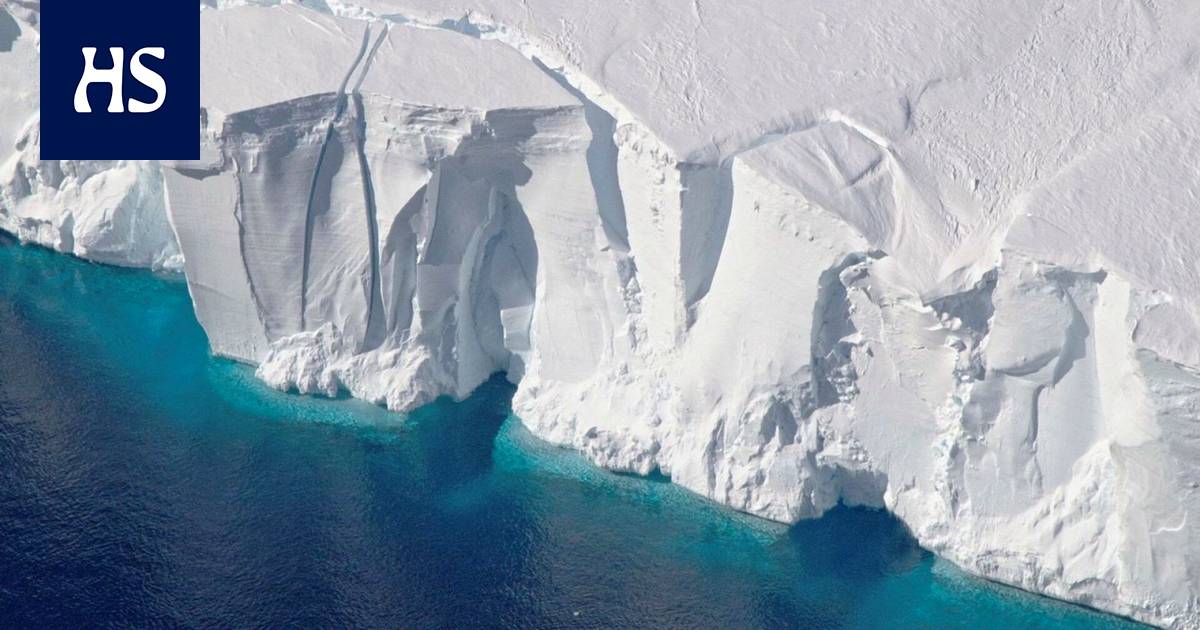Antarctic continental glaciers have been relatively little studied. We know that the climate crisis has weakened the region, but we do not know the extent of the damage. “There are no good surprises from the southern continent,” describes glaciologist John Moore.
Antarctica glaciers are weakening due to the climate crisis more than previously thought, according to recent studies that shed new light on the matter. The news agency reported on the topic, among others Reuters and a British magazine The Guardian.
Two separate studies published on Wednesday give an alarming picture of the effects of the climate crisis on Antarctica.
First In the journal Nature a published study shows that the Antarctic ice shelves have lost almost twice as much ice as previously thought due to the ice mass falling into the sea.
Ice shelves are ice masses attached to continental glaciers and floating in the sea. They support the glaciers themselves and prevent them from sliding into the sea. Normally, chunks fall from the ice shelves seasonally, which is replaced by new ice over time. In this way, the mass of the shelves remains more or less the same.
However, as the sea warms, the ice shelves lose significantly more mass than they naturally regain, which quietly reduces their size.
According to a new analysis of satellite images, the Antarctic ice shelves have lost 12 trillion tons of ice mass since 1997 due to the usual melting and falling ice pieces. That’s about twice as much as previously thought.
“
“When trying to map the Antarctic ice regions, a submarine is like a blind man with a stick.”
Lapland a geophysicist and glaciologist working as a research professor at the university’s Arctic Center John Moore tells HS that while the new information is significant, it is not surprising. Antarctica has been studied remarkably little.
This is largely due to a lack of resources, but also due to practical challenges. Antarctica is an absolutely huge place, which is difficult to reach and where it is difficult to carry out research.
“When you try to map glacier areas the size of Lapland with a submarine, it’s like a blind man on the road with a stick. There’s a lot we don’t know yet,” says Moore.
According to Moore, the information obtained from the new studies is alarming. However, you can’t even expect anything else.
We know that global warming is causing damage to the Antarctic ice sheets. It’s just a question of what we can observe about it in research.
“They say that there are no good surprises in an old house. The same applies to Antarctica.”
Most of the observed ice shelf weakening has occurred on the western side of Antarctica, which is below sea level and therefore at the mercy of ocean warming.
However, the study says that even the ice shelves of the eastern continental glacier of Antarctica, which is considered stable, are losing more mass than they are gaining back.
Alarming the news does not end with one investigation. Separate published on the same day article opens up the situation of the Antarctic’s eastern continental ice sheet more.
EAIS (East Antarctica Ice Sheet), called the “sleeping giant”, is the world’s largest continental glacier, which includes most of the world’s ice. It is significantly larger than its western counterpart or, for example, the Greenland ice sheet, whose melting has greatly worried scientists in recent years.
If the entire EAIS melted, it would raise the sea level by as much as 52 meters. Fortunately, the rock bed of EAIS is mostly above sea level, which is why it is not affected by sea warming. That’s why it was considered stable for a long time.
However, a recent article says that EAIS has also already taken a hit due to the climate crisis.
Researchers warn that if global warming is not curbed to 2 degrees Celsius, the EAIS also threatens to melt more and more. This would raise the sea level by many meters already in a couple of centuries, if not earlier.
A massive opening in the continental ice sheet on the western side of Antarctica in 2019. The opening is 39 square kilometers in size and almost 300 meters high.
Moore on the other hand, believes that a rise of several meters is already inevitable. The only uncertainty is how quickly it will happen.
“There have been so many emissions since the industrial revolution that they will affect the glaciers for centuries. I think we should just aim to stabilize the glaciers.”
Moore himself works on projects that try to stabilize the Glaciers and prevent the ice from falling into the sea. Even if they succeed, it is really hard to predict the end result.
“For example, we can estimate the melting of the glaciers in Greenland and the Arctic region fairly well, but Antarctica is a big risk.”
The new analysis examines EAIS’s response to past warm periods and thereby creates digital simulations of future scenarios.
In a worst-case scenario, the EAIS could melt enough to raise sea levels by as much as five meters by 2500. This would redraw the entire world map and affect the lives of millions of people, leaving many coastal areas uninhabitable.
In the best case, however, EAIS could collect even more ice from snowfall, which in turn would lower the sea level.
In any case, the actions of people have a big impact on the future of EAIS, which is why the new information about its melting should be taken seriously. It would be good to let the “sleeping giant” continue to sleep.
Correction August 11 at 8:37 p.m.: The story incorrectly stated that, according to the analysis of satellite images, the Antarctic ice shelves would have lost 12 trillion tons of ice mass since 1997. The correct number is 12 trillion tons.
#Environment #Antarctic #ice #shelves #lost #trillion #tons #mass #years #Sleeping #Giant #stable #concern









